HistoricalSites, Zielona Gora
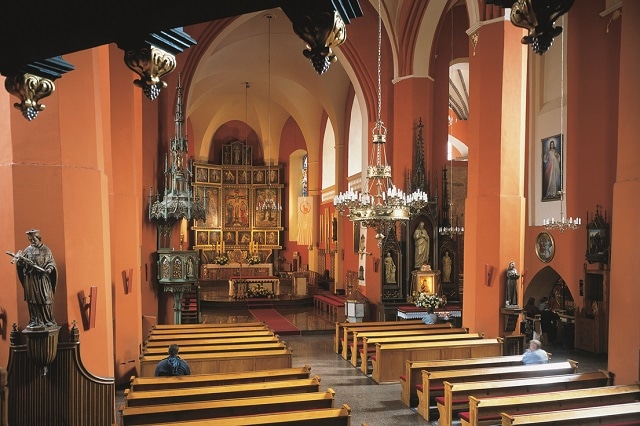
Removed from Unnamed collection
Co-cathedral of Saint Hedwig 
The oldest architectural monument in the city, dated to the 2nd half of the 14th century.The cathedral has a triple-nave hall arrangement with a separate presbytery. Inside there are a neo-Gothic alter, late Gothic sculptures of Saint Hedwig and Saint Anna Samotrzec, a Baroque choir and a series of stone slabs with epitaphs. http://www.cit.zielona-gora.pl/article,en,206,monuments.html
Map
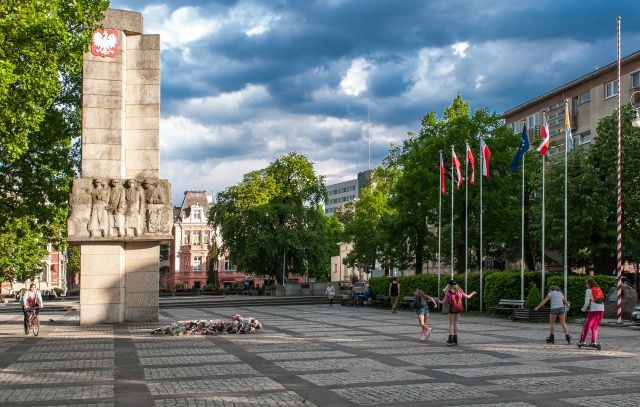
Removed from Unnamed collection
Heroes Square (Plac Bohaterow) 
Designed with the street leading to railway station (now al. Independence) in the 60s, it received its final form in 1894. Until the First World War there was a monument of the German Emperor William I. However, the statue was later seized for military purposes in 1917. In 1945, the monument of Gratitude to Soviet Soldiers was unveiled. http://www.cit.zielona-gora.pl/article,en,206,monuments.html
Map
Explore more places related to this search:
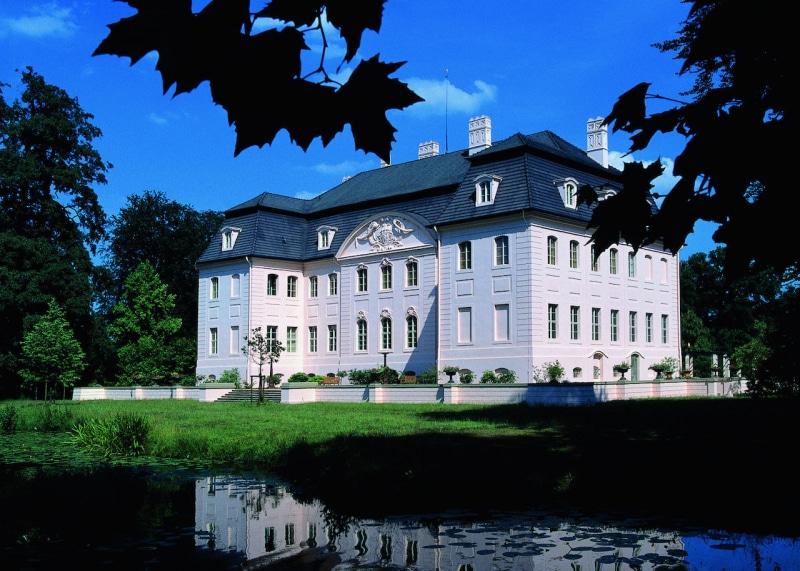
Removed from Unnamed collection
Stiftung Fuerst Pueckler Museum Park und Schloss Branitz 
Visitors will only see original interior from the world and the era of Prince Pückler in Branitz Castle. While the library allows the visitors to familiarise themselves with his thinking, the Oriental rooms will take people on the great journey of the prince to the pyramids of Egypt. http://cottbus-tourismus.de/en/experience-and-detection/museums/article-stiftung-fuerst-pueckler-museum-park-und-schloss-branitz-schloss-.html
Map
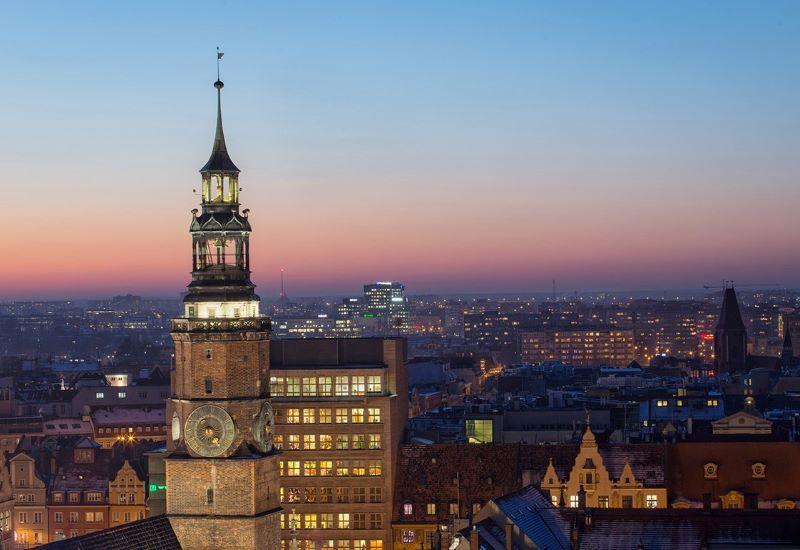
Removed from Unnamed collection
Wroclaw Old Town Hall 
Old Town Hall is a unique Gothic building in European architecture. It has 2 storeys, 3 parts with a rectangular building of the councils, which is attached to the northern wall and a square tower. Located in the city centre, it was being built for about 250 years (13 - 16th century). It used to serve as the seat of the city authorities and the court.
The oldest part of the Town Hall was built ca. 1299 (according to the sources). This part is called consistorium (Latin: place of gatherings) and now belongs to the building. The consistorium has two parts: the underground hall covered with the ceiling and the Western tower. After buying the rights of the voyt, the meaning of the Council was much bigger. The growing number of the Council members demanded a new building. In the years 1328-1333, near the consistorium a new, smaller building was built - praetorium (Latin: the seat of the leaders). The building is the northern part of the Town Hall, near the square with the whipping post.
Since the very beginning the Town Hall has witnessed many important historical events and has been a representative building where the authorities invited their honourable guests. This tradition is still alive. The most important world leaders, monarchs, clergy and artists have been invited into the Town Hall. In the cellar of the building there is one of the oldest restaurants in Europe - the legendary Piwnica Świdnicka. https://visitwroclaw.eu/en/place/old-town-hall-in-wroclaw
Map

Removed from Unnamed collection
East Side Gallery 
At 1316 metres long, the open-air art gallery on the banks of the Spree in Friedrichshain is the longest continuous section of the Berlin Wall still in existence. Immediately after the wall came down, 118 artists from 21 countries began painting the East Side Gallery, and it officially opened as an open air gallery on 28 September 1990. Just over a year later, it was given protected memorial status.
In more than a hundred paintings on what was the east side of the wall, the artists commented on the political changes in 1989/90. Some of the works at the East Side Gallery are particularly popular, such as Dmitri Vrubel’s Fraternal Kiss and Birgit Kinders’s Trabant breaking through the wall. They are not just a popular subject for postcards – you’re sure to want to photograph them yourself. https://www.visitberlin.de/en/east-side-gallery
Map
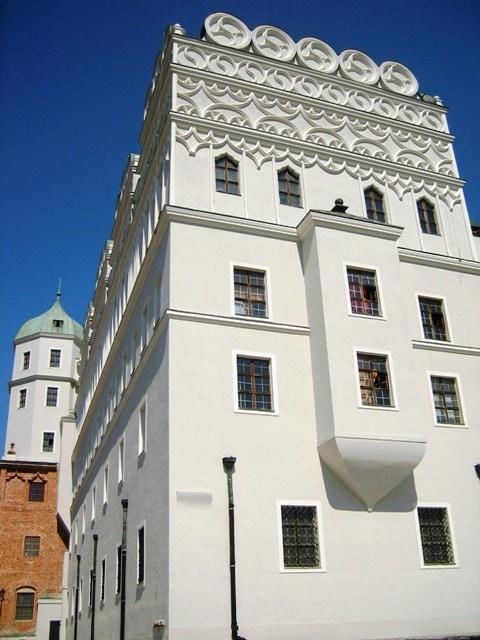
Removed from Unnamed collection
Castle of the Pomeranian Dukes 
The first wooden residence for the rulers of Pomerania was first erected here in the 13th century, on a hill along the Odra River. More than 100 years later Barnim III made it a building of stone. The Pomeranian Duke's Castle (Zamek Książąt Pomorskich) was then continuously expanded. http://www.visitpomerania.eu/cities/szczecin/attractions/pomeranian-dukes-castle/
Map

Removed from Unnamed collection
Znin town 
Żnin is a charming town, situated about 42 km from Bydgoszcz in the historical region of Pałuki, whose origins date back 750 years.Its symbol is the 15th-century tower of the Town Hall. http://www.visitbydgoszcz.pl/en/discover/environs/3020-znin
Map

Removed from Unnamed collection
Hradek u Nechanic Castle 
Near the Hrádek village, the Hrádek u Nechanic Castle was built between 1839 and 1857 on so-called Lubenský hill. It was built as a prestige summer residence of the county family of Harrach by František Arnošt, the count of Harrach, an important representative of the Jilemnice family line. http://www.kralovehradecko-info.cz/en/atraktivity/hradek/hradek-u-nechanic.php
Map
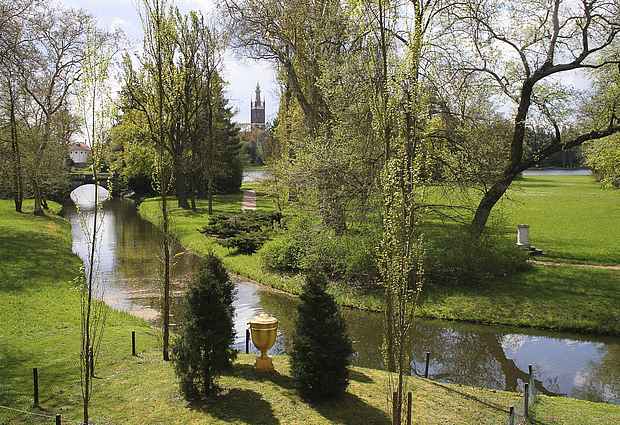
Removed from Unnamed collection
Garden Kingdom Dessau-Woerlitz 
His principality was small, his ideas were big. Leopold III. Friedrich Franz, enlightened prince and duke of Anhalt-Dessau (1740 -1817), wanted to combine the "useful with the beautiful". https://tourismus.dessau-rosslau.de/welterbe/gartenreich-dessau-woerlitz.html
Map
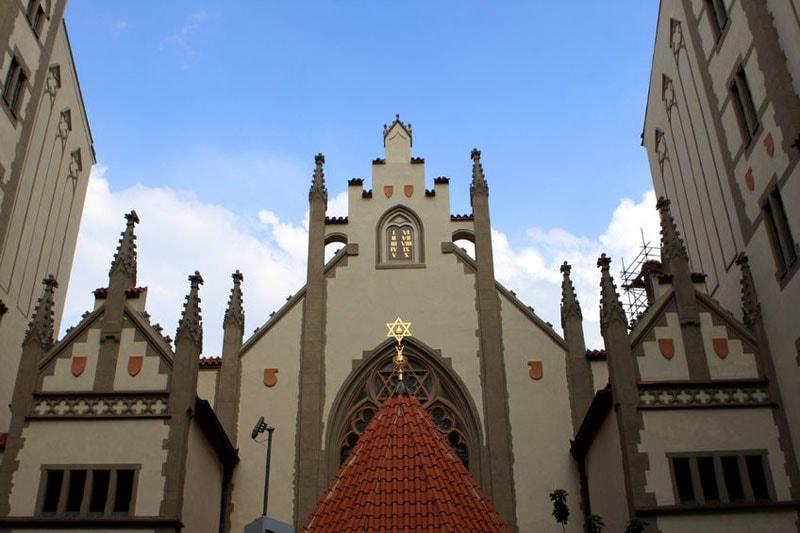
Removed from Unnamed collection
Prague's Jewish Quarter (Ghetto) 
Prague’s Jewish Quarter (“Židovské město” in Czech) is one of the most impressive places in the capital of the Czech Republic. Josefov, as the quarter is officially named, is at the same time beautiful and wrathful, due to its complicated history. It used to be the largest Jewish ghetto in Europe, and its Old Jewish Cemetery is the most remarkable of its kind on the continent.
Many cities used to have – or still have – the so called “Jewish quarters”, where the Jewish minority lived. Apart from Prague, we can for example name Jerusalem, Seville, or New York. Those quarters were quite often in the form of ghettos. The Jewish quarter of Prague, since 1992 listed as a UNESCO World Heritage site, is definitely one of the most significant ones and if you are visiting Prague, you should definitely see it. Not only as a reminder of a tragic part of the world’s history, but also for its undeniable beauty and charm. http://www.praguego.com/attractions/jewish-quarter/
Map
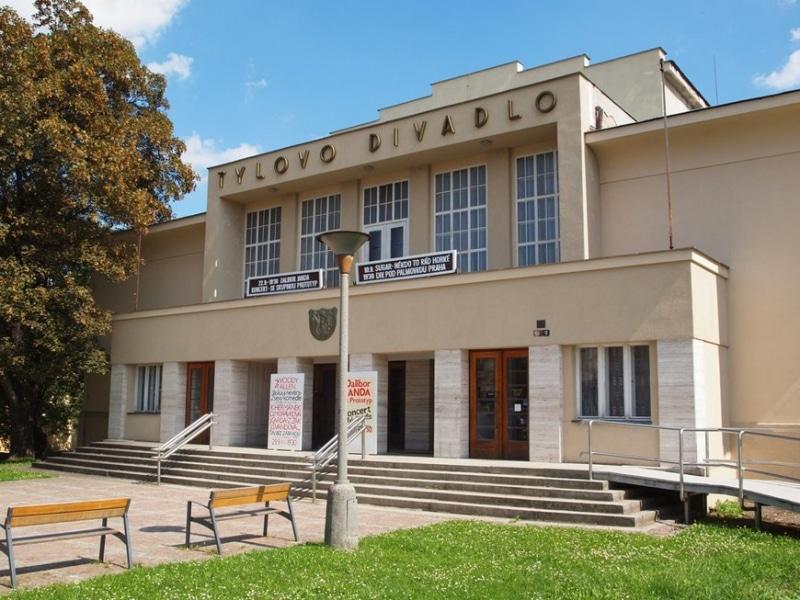
Removed from Unnamed collection
Kutna Hora Tyl Municipal Theatre 
This historical building is, as its name suggests, associated with Josef Kajetán Tyl, an important figure of Czech theatre and the National Revival movement. J. K. Tyl, a native of Kutná Hora, was the first person to publicly formulate the idea to build an independent theatre in Kutná Hora for the then Tyl Amateur Theatre Company, which was based in Kutná Hora and of which Tyl was himself a member. http://destinace.kutnahora.cz/d/kutna-hora-tyl-municipal-theatre
Map

Removed from Unnamed collection
Dacicky House 
Dačický House, located on a sloping square in sight of the Stone Fountain, is a unique exhibit in itself. At its core is a pre-Hussite house, which was generously reconstructed after 1500 for the Utraquist bishop Filip de Villanuova, and was the birthplace of the chronicler Mikuláš Dačický of Heslov in the mid-16th century. http://destinace.kutnahora.cz/d/dacicky-house-interactive-exposition-about-kutna-hora-and
Map
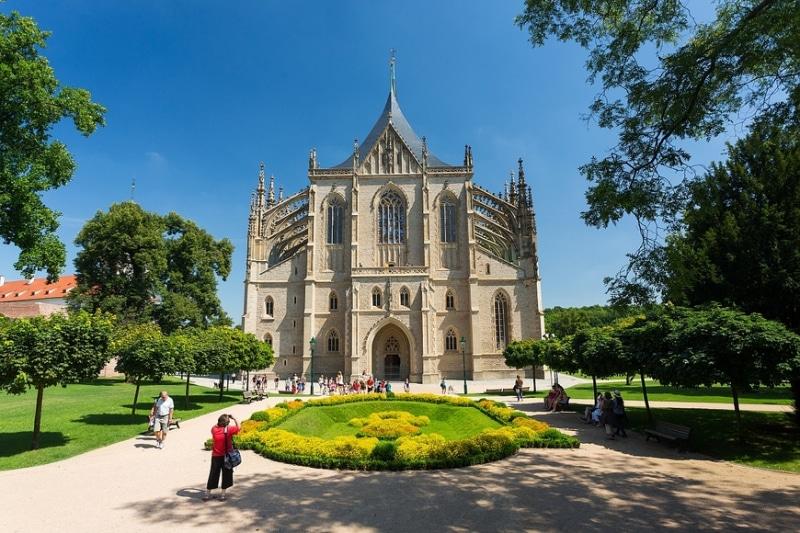
Removed from Unnamed collection
The Cathedral of St Barbara 
The Cathedral of St Barbara, a jewel of the Late Gothic period and one of the four cathedral-type buildings in Bohemia, was incribed on the UNESCO World Heritage List together with the Cathedral of the Assumption of Our Lady and St John the Baptist and the historical centre of Kutná Hora. http://destinace.kutnahora.cz/d/cathedral-of-st-barbara
Map
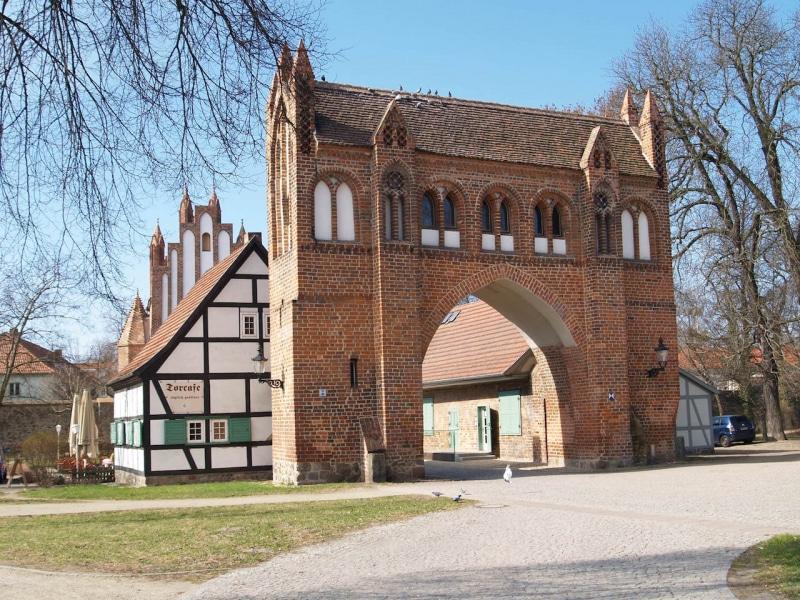
Removed from Unnamed collection
The Friedland Gate 
Is the oldest, in its complexity the best preserved and with 88 meters length at the same time the largest gate area. Around 1300 the 20 meter high main gate was built on the town site. The outer gate on the field site was constructed in the middle of the 14 century. https://www.neubrandenburg-touristinfo.de/en/city-portrait/monuments-and-sights
Map
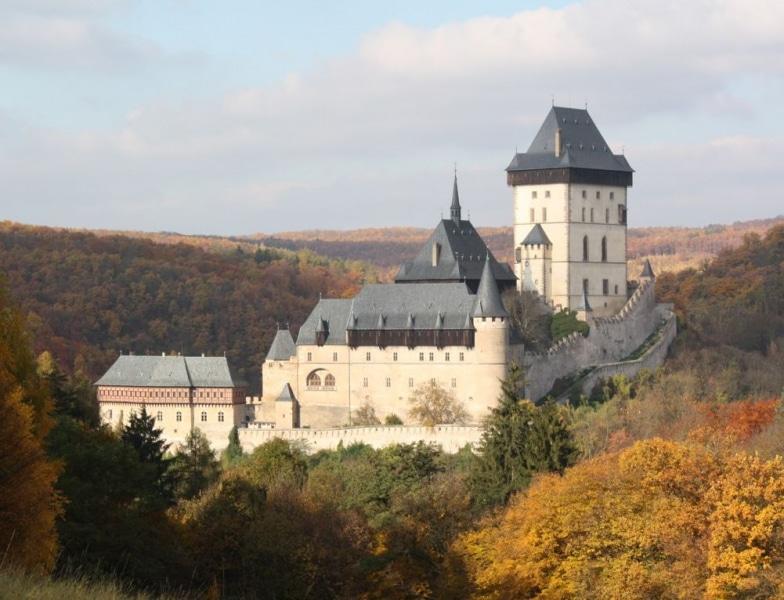
Removed from Unnamed collection
Karlstejn Castle 
Karlštejn Castle was founded in 1348 by the Charles IV, King of Bohemia and Holy Roman Emperor as his private residence and a place of safekeeping royal treasures, especially his collections of holy relics and the Imperial Crown Jewels. In 1355 Charles IV stayed here for the first time, overseeing the construction and decoration work, especially in chapels. The construction was completed in 1365 when the Chapel of the Holy Cross in the Great Tower was consecrated.
Over the centuries the castle has always been in hands of the king or a state institution, never in private hands. Nowadays it is owned by the state.
Very impressive is the preserved original stair-arrangement of individual castle buildings. The lower section with a small courtyard by the Well Tower and the Burgrave´s House continue through the majestic five-storey Imperial Palace and the Marian Tower. At the highest point, the construction of the castle culminates in a monumental, 60-meter-high Great Tower and its massive fortifications.
A unique original 14th-century wall decoration, a set of 129 paintings created by Master Theodoric in the Chapel of the Holy Cross (the largest in the world), the largest portrait gallery of kings of Bohemia in the Czech Republic, a replica of the royal Crown of Bohemia, a unique castle well. The castle is also famous as a set to a comedy play Night at Karlštejn Castle by Czech poet Jaroslav Vrchlický. https://www.hrad-karlstejn.cz/en/about
Map
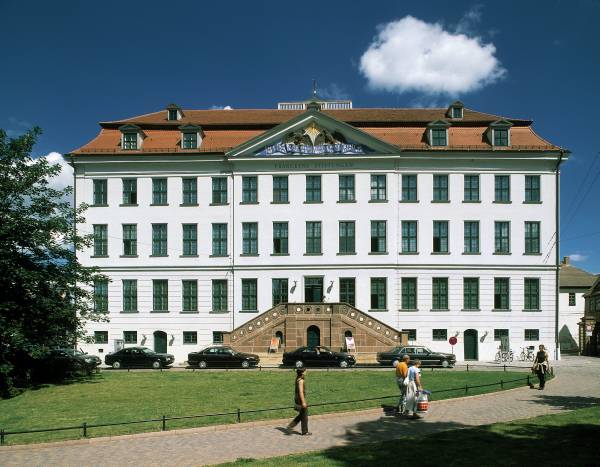
Removed from Unnamed collection
Franckesche Stiftungen 
The orphanage founded in the year 1700 by August Hermann Francke, with its subsequent framework building ensemble, also Europe’s larges framework house, is a remarkable cultural monument at European level with it being included on the list for selection as a world cultural heritage. http://www.halle.de/en/Culture-Tourism/Points-of-Interest/Culture-wherever-o-06059/
Map
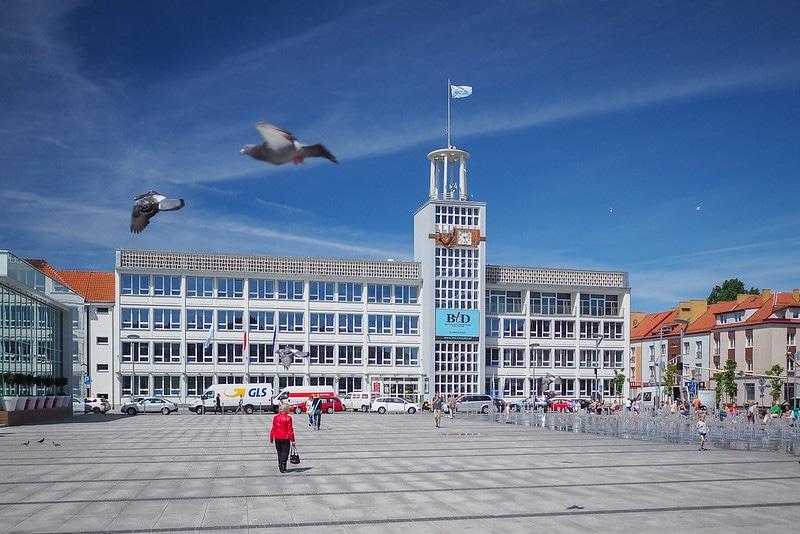
Removed from Unnamed collection
Koszalin City Hall 
The city government seats in a postmodern building at the Rynek that was constructed in the early sixties of the 20th century. It is the sixth Town Hall (Ratusz) of Koszalin. The last Town Hall was located on the southern side of the market place, but burnt down in March 1945. http://www.visitpomerania.eu/cities/koszalin/attractions/city-hall/
Map
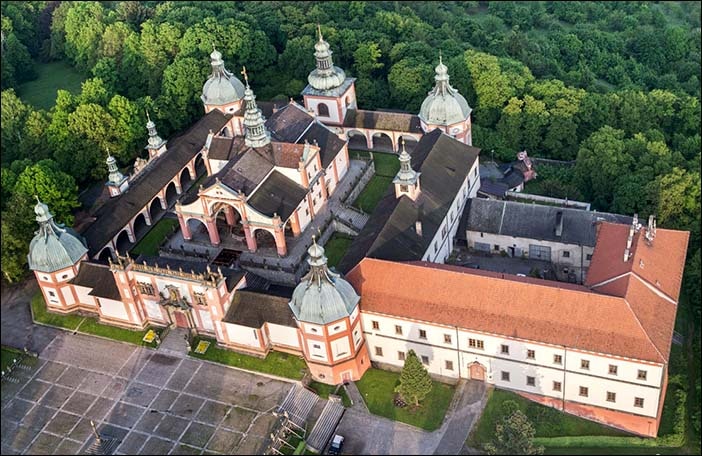
Removed from Unnamed collection
Svata Hora 
Baroque complex Svatá Hora (Holy Hill), the prominent Marian pilgrimage site of Czech Lands with central Basilica of the Assumption of Virgin Mary, is also an outstanding cultural, architectonic and historic monument of the country. http://www.waymarking.com/waymarks/WMVEBY_Svat_Hora_Baroque_Complex_Svat_Hora_u_Prbrami_Central_Bohemia
Map

Removed from Unnamed collection
Republic square 
Pilsen's main square of the Republic is dominated by the beautiful Gothic cathedral of St. Bartholomew with the highest church tower in the Czech Republic. You will find many beautiful historic houses, lots of cafes and restaurants. During the year there are dozens of cultural events, festivals and festivals. https://www.plzen.eu/turista/poznej-plzen/to-nejlepsi-z-plzne/namesti-republiky/namesti-republiky-2.aspx
Map

Removed from Unnamed collection
Chateau Breznice 
Originally a water keep, converted in the 16th century into a Renaissance chateau. A renaissance garden, a herb garden, and an English park surround the buildings. http://www.czechtourism.com/c/breznice-chateau/
Map

Removed from Unnamed collection
Olomouc castle 
You simply should not miss the Olomouc castle site situated on the Wenceslas Hill! Right here in 1306, the last Přemyslid, the Czech king Wenceslas III, was assassinated. You can admire the Bishop's Palace with its famous Romanesque windows, the gothic St. Wenceslas Cathedral, today the seat of the Archbishop of Olomouc, or the Archdiocesan Museum founded on the initiative of Pope John Paul II. http://tourism.olomouc.eu/sights/olomouc-castle/en
Map

Removed from Unnamed collection
Holy Trinity Column 
The Holy Trinity Column in Olomouc is the largest group of Baroque statues within a single sculptural monument in Central Europe.
The column reaches a height of 35 metres and its lower part houses a chapel. The sculptural decoration is made of 18 stone sculptures of saints, 12 light-bearers and 6 relief busts of the apostles. The column is dominated by gilded copper sculptures of the Holy Trinity on the top and the Assumption of the Virgin beneath it. The larger-than-life figures are enveloped in light, airy drapery with lively expressions on their faces and corresponding gesticulations of their hands. The overall sculptural decoration has a natural and harmonious appearance without being exaggerated in the typically flamboyant and exaggerated Baroque mode. http://tourism.olomouc.eu/sights/fountains-and-columns/detail=230/en
Map

Removed from Unnamed collection
Rostejn Castle 
Castle was built in the first half of the 14th century. In the 1570s Zacharias of Hradec carried out a major reconstruction and ordered two enclosures for deer nearby. From 17th century to beginning of the 20th century it was used as a hunting castle. http://www.telc.eu/tourist_attractions/rostejn_castle
Map
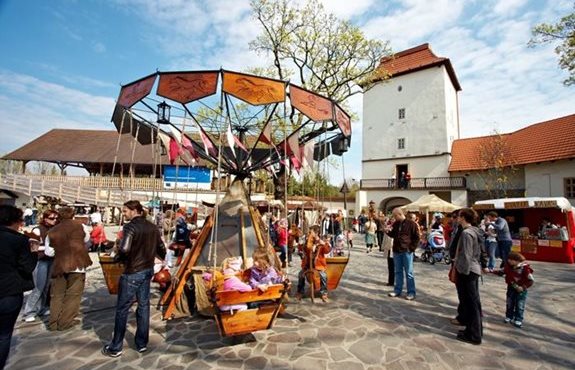
Removed from Unnamed collection
Silesian Ostrava Castle 
A medieval monument in an industrial city – Silesian Ostrava Castle.Valuable historical monuments can be seen even in the industrial city of Ostrava. http://www.czechtourism.com/c/ostrava-slezskoostravsky-castle/
Map

Removed from Unnamed collection
Veveri Castle 
The castle was held in possession of various noblemen and its history is interwoven with a number of myths and legends. Today it is a venue of various cultural and social events. At the foot of the castle there is a steamboat stop. http://www.czechtourism.com/c/brno-veveri-castle/
Map
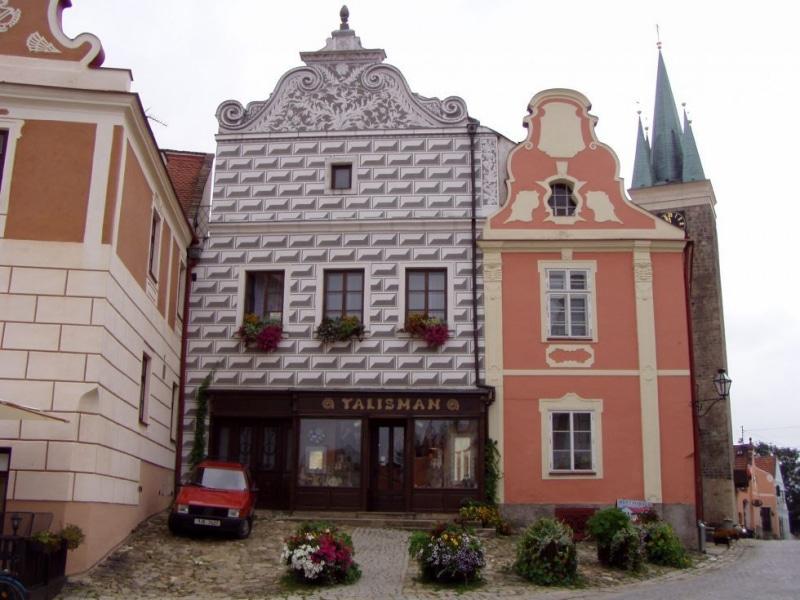
Removed from Unnamed collection
House of Telc 
The Telč´ House on the square of Zacharias from Hradec 31.
The permanent exhibition about history and legends of Telč and surroundings. http://www.telc.eu/tourist_attractions/house_of_telc
Map

Removed from Unnamed collection
3 Maja Street 
3 Maja Street (former paniaga) is one of the oldest and prettiest streets downtown. An elegant promenade of our city, a place of family and friendly meetings. This oldest city route was created shortly after Rzeszów was granted city rights (in 1354). He connected the headquarters of the then owners of the city (the area of the later built Lubomirski Castle) with the Parish Church and the Bernardine Fathers' Monastery. It begins at Farny Square and the intersection with Kościuszki Street, and ends at the branch where the Lubomirskich Avenue and Zamkowa Street start. The current street name was given to it in 1891 on the occasion of the centenary of the 3rd May Constitution. Initially it was Zamkowa Street, then Pijarska Street, then Pańska Street, it was called Paniaga in the dialect of Rzeszów.
In the buildings on the east side of the street behind the building of the "Galeria Paniaga", a large section of the street is occupied by the frontage of the complex of the former Piarist convent, and then two banking buildings. A statue of Stanisław Konarski, unveiled in 1989, by Kazimierz Mierczyński is standing in front of the building of the former college, now I LO. The buildings on the west side of the street, from Farny Square, are opened by a corner tenement house No. 2 built around 1840, which once housed the printing house and the first Andrzej Pelar bookstore in Rzeszów. Further, behind the branch of Jagiellońska Street, there are two stately Art Nouveau tenement houses. http://www.rzeszow.pl/miasto-rzeszow/historia/zabytki-rzeszowa/ulica-3-maja
Map
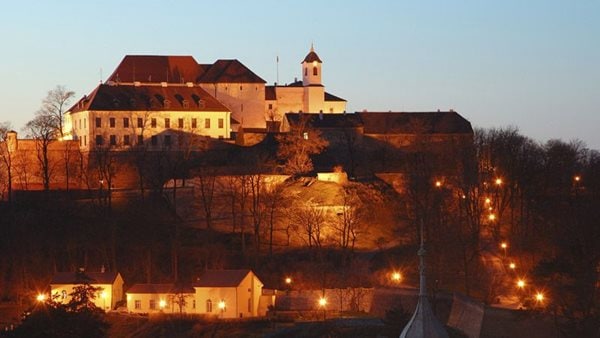
Removed from Unnamed collection
Spilberk Castle 
A prison shrouded in horrific legends, valuable historical collections, a beautiful view over the city and many cultural events held throughout the year – all of this is Špilberk Castle. One of the two most important dominant features of the Moravian capital and a place which became synonymous with the most horrific of dungeons throughout the whole of Europe is nowadays one of the most valuable monuments in Brno.
Špilberk’s importance and role changed fundamentally over the course of the centuries. This leading royal castle and seat of the Moravian margraves, gradually transformed into a monumental Baroque fortress, the toughest prison of the Austrian monarchy and later a military barracks. Nowadays it is home to Brno City Museum and one of the most important cultural centres in the city. http://www.czechtourism.com/c/spilberk-castle/
Map
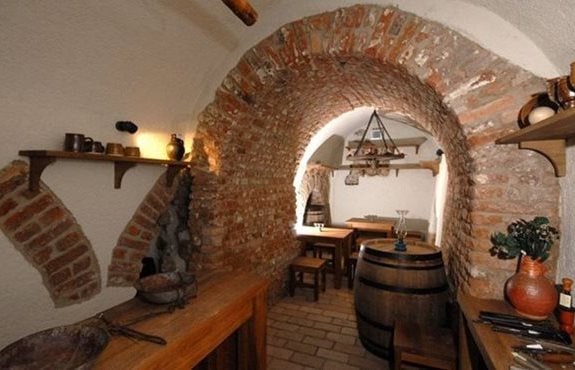
Removed from Unnamed collection
Brno underground 
Proof of the fact that the Moravian capital still has its secrets, is the newly renovated Brno underground under Zelný trh. It was only recently that a tour route was opened here for the general public, which leads under the surface of one of the oldest squares in Brno. http://www.czechtourism.com/c/brno-underground/
Map
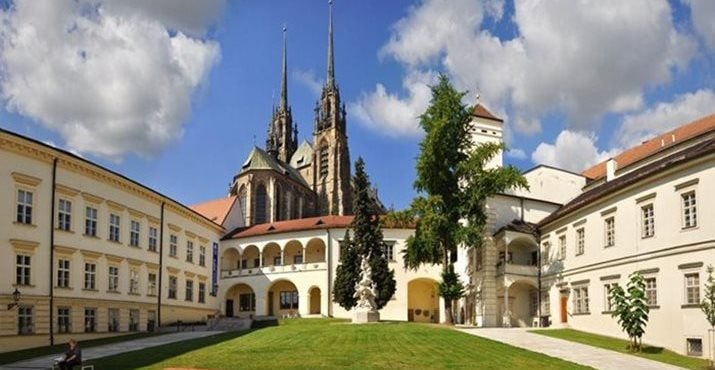
Removed from Unnamed collection
Moravian Museum 
The museum was created back in 1817 by means of an imperial decree by František I, and nowadays it contains over six million items. Take a closer look at prehistoric life in Pavilon Anthropos where you will see a life-size mammoth and all the things a prehistoric family had to face. http://www.czechtourism.com/c/brno-moravian-museum/
Map
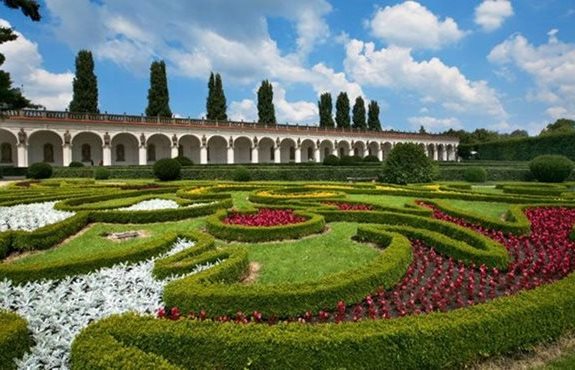
Removed from Unnamed collection
Kromeriz Gardens 
During the summer, Kroměříž is reminiscent of the Garden of Eden. The local gardens, which are included in the UNESCO world heritage list, represent a perfect symbiosis of light, plants, water, art and architecture. The Castle and Gardens are some of the most beautiful in Europe. http://www.czechtourism.com/c/kromeriz-unesco-gardens/
Map

Removed from Unnamed collection
Zitadelle Petersberg 
On June 1st, 1695, the first foundation stone was laid for one of the few remaining 17th century city fortifications to be found in Germany. Today the Petersberg Citadel is an impressive example of European fortification construction dating from the 17th to the 19th centuries. http://www.erfurt.de/ef/en/sightseeing/part2/index.html
Map
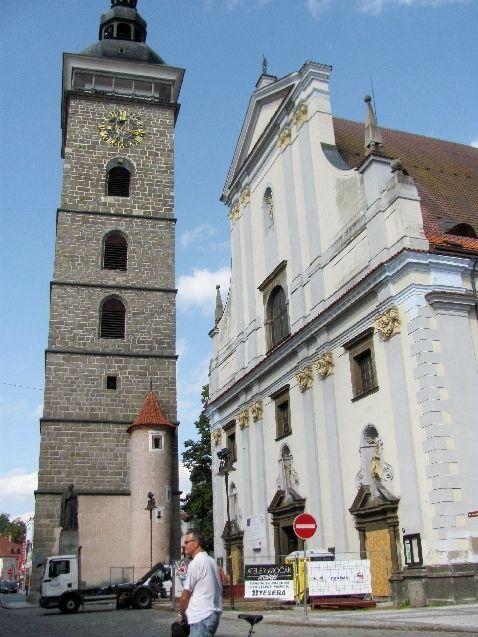
Removed from Unnamed collection
Black tower 
The Renaissance tower originally served as a watchtower and belfry. The building structure is 71.9 m tall and holds 5 bells and a clockwork. Once you conquer 225 stairs (height of 45 m) you will be rewarded with a strikingly beautiful view of České Budějovice and the surroundings. http://en.inbudejovice.cz/13_53197_black-tower-ceske-budejovice/
Map
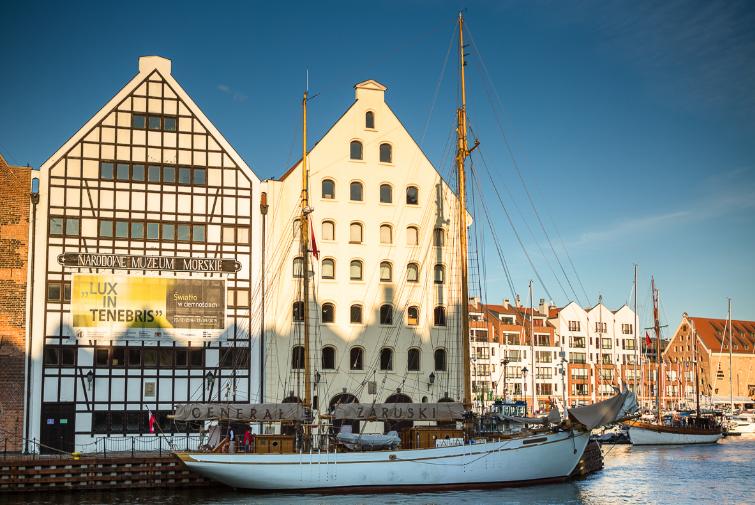
Removed from Unnamed collection
National Maritime Museum 
The National Maritime Museum, considered to be one of the finest of its kind in Europe. Among the exhibits presented one can see: port navigation, techniques of reloading goods, what a merchant trading office and middle-class salon looked like, as well as the workshops of sailmakers, ship carpenters and ropemakers. The historic walls also conceal Poland’s only permanent exhibition of maritime paintings. The exhibition shows the history of diving and the most interesting archaeological sites in Poland and the world. It includes diving equipment: suits, devices and different types of diving bells that were used to explore the seabed. Some of the world’s most famous archaeological sites presented in the exhibition are shipwrecks from Homer’s epoch found off the coast of Turkey. The section devoted to underwater archaeology in Poland presents the largest achievements of the National Maritime Museum’s research team - “Miedziowca” a merchant ship from the fifteenth century, exploration of the Swedish warship “Solena” from the seventeenth century and the English wreck from the eighteenth century “General Carlton of Withby”. The youngest branch of the museum - the Maritime Culture Centre located next to the Crane is the only educational facility in Poland and one of the most modern facilities in Europe, which in an interactive and multimedia way presents maritime issues. It is an exciting adventure in science! http://visitgdansk.com/en/hity-gdanska/The-Crane,a,3485
Map

Removed from Unnamed collection
The Crane 
A thick hemp rope, a system of blocks and two wooden turnstiles moved by... walking workers. The crane’s medieval mechanism lifting 4-ton loads to a height of 11 metres was also used to install masts. Located on the Motława River, Gdańsk’s most characteristic monument is the largest medieval port crane in Europe and at the same time a fortified water gate with two huge brick towers, once protecting the city from the side of the harbour. Now the majestic Crane, as a great example of historic port buildings, a witness of the powerful Hanseatic Gdańsk, called the granary of Europe, is the perfect setting for exhibitions of the National Maritime Museum. Its headquarters are also situated on the other side of the Motława River on Ołowianka Island. http://visitgdansk.com/en/hity-gdanska/The-Crane,a,3485
Map



